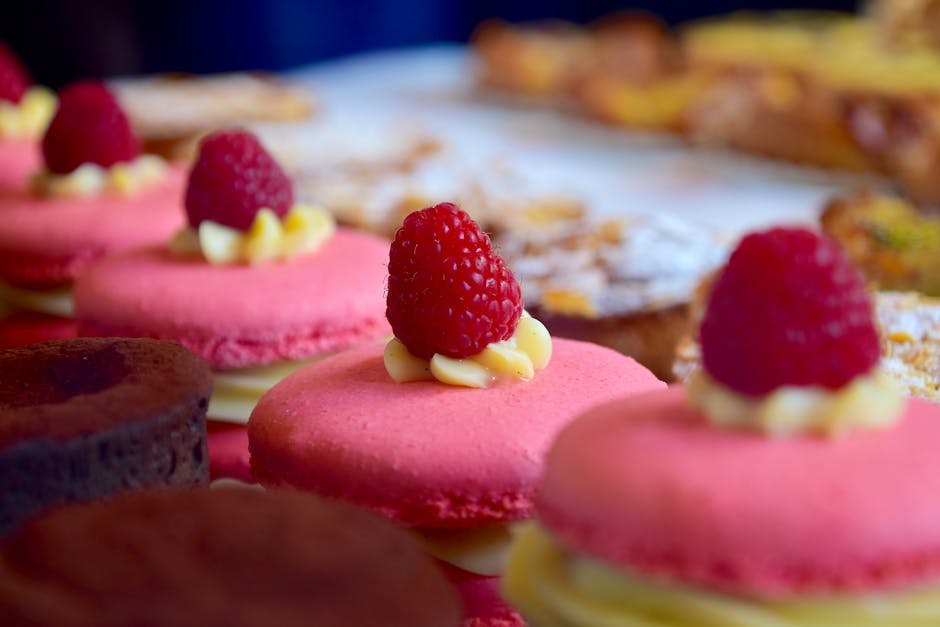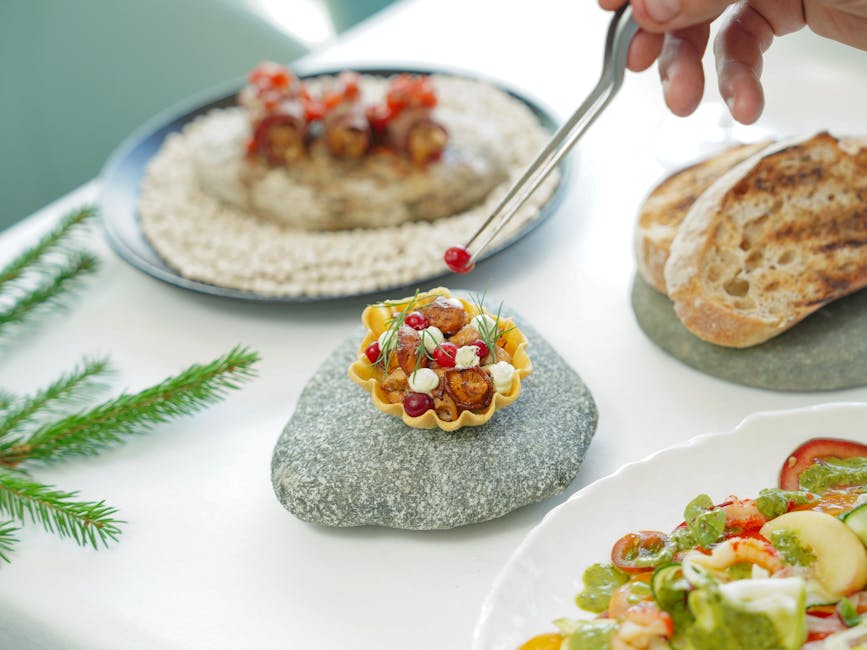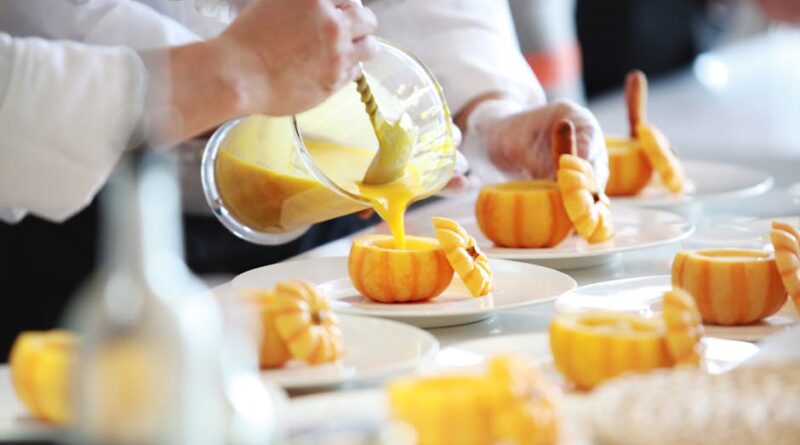The Art of Food Presentation: Elevating Culinary Experiences
When we sit down to a meal, our senses are immediately engaged. The aroma of freshly cooked food wafts through the air, enticing our taste buds. The sizzle of a hot pan and the clinking of cutlery against plates create a symphony of sounds. But perhaps one of the most visually striking aspects of dining is the presentation of the food itself. The art of food presentation goes beyond just placing dishes on a plate; it is a carefully curated experience that enhances the flavors, textures, and overall enjoyment of a meal.
The History of Food Presentation

Food presentation is not a new concept. In fact, the art of plating food has been around for centuries, dating back to ancient civilizations such as the Egyptians, Greeks, and Romans. These cultures often used elaborate garnishes, colorful ingredients, and intricate designs to showcase their culinary creations.
One of the earliest recorded instances of food presentation can be traced back to the Chinese Song Dynasty, where dishes were meticulously arranged in a way that balanced colors, textures, and flavors. This attention to detail laid the foundation for what would eventually become the modern art of food presentation.
In more recent history, the French revolutionized the way food was presented with the advent of Haute Cuisine in the 19th century. Chefs such as Auguste Escoffier and Georges Auguste Escoffier placed a strong emphasis on the visual appeal of dishes, often using intricate plating techniques and artistic garnishes to elevate the dining experience.
Today, food presentation has evolved into a form of artistry that extends far beyond the confines of a plate. Chefs around the world are pushing the boundaries of creativity, using unconventional ingredients, innovative techniques, and modern plating styles to create visually stunning dishes that are as much a feast for the eyes as they are for the palate.
The Principles of Food Presentation

There are several key principles that guide the art of food presentation. These principles help chefs create visually appealing dishes that not only look good but also enhance the overall dining experience. Some of the most important principles include:
Balance
Balance is a fundamental principle of food presentation. A well-balanced dish is visually appealing and harmonious to the eye. Chefs achieve balance by considering the shape, color, texture, and size of each component on the plate. By arranging elements in a way that creates visual symmetry and contrast, chefs can create a sense of equilibrium that draws the diner’s attention.
Contrast
Contrast is another essential element of food presentation. Contrasting flavors, textures, and colors can create visual interest and excitement on the plate. For example, pairing sweet and savory ingredients, crunchy and creamy textures, or vibrant and muted colors can add depth and dimension to a dish.
Proportion
Proportion refers to the size and scale of each component on the plate. Chefs must consider the proportion of ingredients to ensure that the dish is visually balanced and aesthetically pleasing. By varying the size, shape, and placement of elements, chefs can create a sense of harmony and unity that enhances the overall presentation.
Color
Color plays a crucial role in food presentation, as it can evoke mood, stimulate appetite, and enhance the visual appeal of a dish. Chefs often use a variety of colorful ingredients such as fruits, vegetables, herbs, and edible flowers to create vibrant and eye-catching plates. By playing with hues and tones, chefs can create visually striking dishes that are as beautiful as they are delicious.
Texture
Texture is another important consideration in food presentation. Combining a variety of textures such as crispy, creamy, crunchy, and chewy can add interest and complexity to a dish. Chefs often use different cooking techniques and ingredients to create a dynamic interplay of textures that engage the senses and elevate the dining experience.
Plating Techniques
Plating techniques are the methods chefs use to arrange and present food on a plate. There are countless plating techniques that chefs can employ, ranging from simple to complex. Some common plating techniques include stacking, layering, fanning, quenelling, and piping. Each technique is designed to highlight the key components of a dish and create a visually appealing presentation.
The Importance of Food Presentation

Food presentation is more than just a visual feast; it is an essential component of the dining experience that can elevate the flavors, textures, and overall enjoyment of a meal. Here are some key reasons why food presentation is important:
Enhances the Dining Experience
Well-presented dishes are more appetizing and appealing to the eye, making them more enjoyable to eat. By carefully arranging ingredients, using vibrant colors, and incorporating creative plating techniques, chefs can create a memorable dining experience that delights all the senses.
Reflects the Chef’s Skill and Creativity
Food presentation is a way for chefs to showcase their talent, skill, and creativity. A beautifully plated dish not only demonstrates a chef’s technical proficiency but also highlights their artistic vision and attention to detail. By pushing the boundaries of creativity and innovation, chefs can create dishes that are as visually stunning as they are delicious.
Creates a Lasting Impression
The presentation of a dish is often the first thing diners notice when a meal is served. A visually striking plate can leave a lasting impression on diners, setting the tone for the entire dining experience. By investing time and effort into food presentation, chefs can create dishes that are not only memorable but also leave a lasting impact on their guests.
Encourages Exploration and Experimentation
Food presentation encourages chefs to think outside the box and experiment with new ingredients, flavors, and techniques. By pushing the boundaries of traditional plating styles and embracing creativity, chefs can create dishes that are innovative, unique, and visually stunning. This spirit of exploration and experimentation can lead to new culinary discoveries and inspire others to think creatively about their own cooking.
Expert Opinions

According to renowned chef and restaurateur, Thomas Keller, “Food presentation is an essential part of the dining experience. The way a dish is plated can enhance the flavors, textures, and overall enjoyment of a meal. As chefs, we have a responsibility to create dishes that not only taste good but also look good. Food presentation is an art form that allows us to express our creativity and passion for cooking.”
Common Misconceptions
One common misconception about food presentation is that it is only important in fine dining establishments. In reality, food presentation is important in all types of kitchens, from high-end restaurants to home kitchens. Whether you are plating a simple salad or a gourmet tasting menu, the way a dish is presented can have a significant impact on the overall dining experience.
Conclusion
To wrap things up, the art of food presentation is a multifaceted and essential aspect of the culinary world. By following key principles such as balance, contrast, proportion, color, and texture, chefs can create visually stunning dishes that enhance the dining experience. Food presentation is not just about making a dish look good; it is about creating a memorable and enjoyable experience for diners. So next time you sit down to a meal, take a moment to appreciate the artistry and creativity that goes into every beautifully plated dish.




